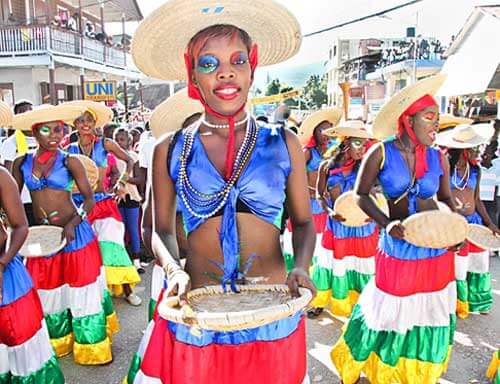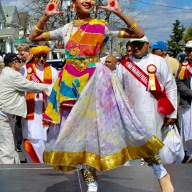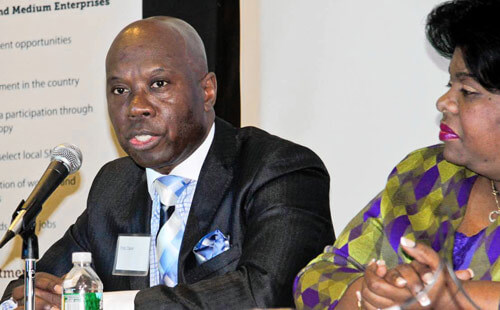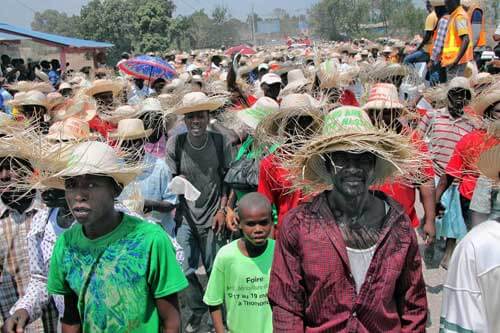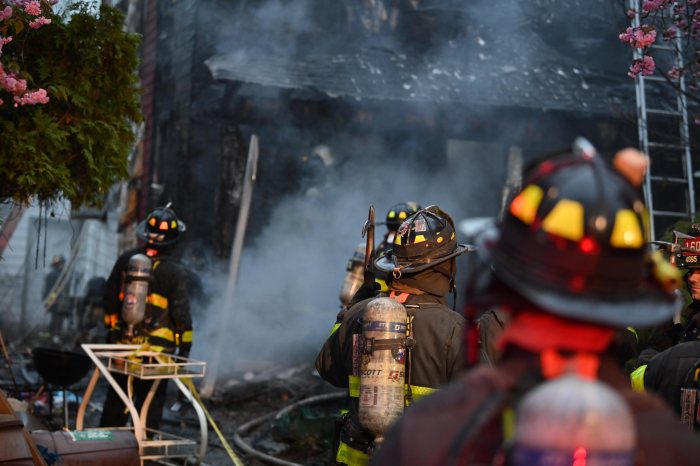Haiti is readying for its national Carnival, to be held this coming weekend in Cape Haitien, not Port-au-Prince. In the spirit of decentralization, last year and this, Haiti’s Carnival is being held in other main cities.
Traditionally, a smaller but grand and entirely unique Carnival celebration is held the weekend before the national Carnival in Jacmel, a coastal town two hours south of Port-au-Prince, near miles of lovely beach frontage.
This year, with support from CARICOM, and the full blessings of the Ministries of Culture and Tourism, the Jacmel Carnival took place under the Caribbean sun with costumed, masked Jacmelians parading along a crowded route, the city’s main drag.
The long-time Jacmel tradition of papier mache, expressed in ghouls and devils and other fantastic creatures masked the walkers. Butterflies to humming and birds of all kinds, bulls and zebras, long–necked giraffes, and other beasts were part of the full menagerie.
Former presidents going back to the Duvaliers, the singers in the band Arcade Fire and the “image” of vodou gods, just to name a few, formed the cast of reveling characters. The traditional Chaloska men with oversized mouths of clapping teeth ran around in circles. These personalities are based on an infamous and murderous Charles Oscar from the 1915 U.S. occupation of Haiti.
This year also witnessed “swat teamed” men covered in tar, chasing down criminals and acting aggressive toward the crowd.
Folkloric dancers danced the route. Rara bands played. Young men wearing wigs and thongs, body-painted in Haiti’s flags colors of red and blue, rode small bikes. Cosmology students paraded with fantastic hair-dos.
Costumed revelers expressed ecological themes. More than one papier-mâché tree was carried along. Marchers wearing costumes of plastic bottles carried signs about proper “plastik” disposal. One group with baskets of fruits and vegetables held signs promoting eating local produce with their signs.
As spectators along the route began to crowd, a bottle-neck began, and even the minister of tourism was caught and tried to figure out how to unsnare the hold-up.
Viewing stands were built along the route to accommodate visitors while other lucky residents peered from the balconies of their friends’ homes.
Elizabeth Zeder, a first time visitor to Haiti from Connecticut, who watched from a balcony said, “The procession was visually amazing and the music was incredible. Actually though, the crowd was completely overwhelming.”
The night before Carnival a reception was held for the town’s dignitaries. Folkloric groups performed and poetry was read. Recognized also were the participants in Haiti’s first international mountain bike event, Mountain Bike Ayiti-MTB Ayiti held on Feb. 1 and 2. The 65-mile route climbed grueling mountains – 8,000 feet of uphill stretches, included an overnight in mountain-high Seguin, and ended in the coastal town of Marigot. The Haitian team from Leogane excelled alongside professionals and world champions such as Marla Streb, Hans Rey among others. Haiti placed first with Jean Willy Joseph, and third with Aleb Alrich.
As one of the areas to concentrate tourism development, the Ministry of Tourism has targeted Jacmel.

Photo by Tequila Minsky


